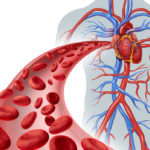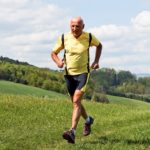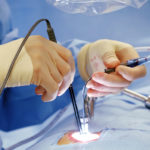Your home exercise program during the initial 4 weeks after surgery is a progression of the exercises and walking program you have been doing whilst in hospital including:
- Range of movement exercises to reduce stiffness in your joints after surgery.
- Breathing exercises so that your lung function continues to improve after discharge.
- Posture correction to reverse bad habits developed either over the years or as a result of your hospital stay.
- A progressive walking program to assist your postoperative recovery and also to improve your fitness in the long term.
- Look up at the ceiling, then put your chin on your chest.
- Tilt your head to each side, one at a time, so your ears move towards your shoulders.
- Turn head to one side and then the other
- One at a time take arms forward from sides to above head and lower again.
- One at a time turn palms up, raise arms sideways to above head and lower again.
- Hands on shoulders, take elbows forwards to touch if possible.
- Shrug shoulders up towards your ears, then relax.
- Brace shoulders back, then relax.
- Hands on shoulders, knees facing forwards, turn head and shoulders to one side looking behind, return to the front, turn to the other side to look behind and back to the front.
- With hands by your sides reach sideways down to one knee and then to the other.
- Take a slow deep breath in filling your lungs with air, holding for count of 3 and then relaxing and breathing out (repeat X 5).
- Huff X 2 – 3 times to move secretions
- Cough X 1 – 2 times to clear secretions.
- Breath in so that the air swells your tummy just below your ribs and relax as you breath out (repeat X5)
- Walk tall, shoulders back, chest forward, chin tucked in.
- Avoid sitting in low, soft lounge chairs which make your shoulders and head hunch forward and which are hard to get out of.
- Improve fitness (exercise tolerance / endurance)
- Control excess weight gain and improve the ratio of ‘good fats’ in the blood
- Improve muscle tone and strength
- Minimize stress and contribute to a general sense of health and well being.
- Ensure you avoid exercising during the heat of the day.
- Drink fluids as advised.
- Wear joggers or walking shoes so that when your heel strikes the ground during walking the shock is cushioned.
Stop exercising if you experience any increased chest pain or discomfort. - Go to your doctor if the pain persists.
- An exercise bike can be used under the same program as long as your arms are not used to get on or off the bike or to hold on whilst pedaling (rest hands on thighs).
- A treadmill requires the user to hold on tightly for balance placing strain through the arms and so its use is NOT ENCOURAGED in first six weeks.
- Any exercise should be restricted by feelings of shortness of breath or by the degree of strain put through the arms.
- If you have any concerns about the physiotherapy regime outlines contact the cardiac physiotherapist.
Exercise, in combination with diet, stress management and weight control can slow the progression of your cardiac disease and possibly prevent the need for further intervention in years to come.
A. EXERCISES
Stiffness in the back, neck shoulders and trunk is a common occurrence after cardiac surgery. Performing gentle range of movement exercise daily can gradually rid your joints of any pain and stiffness, improving your chest mobility and returning the movements of your joints to normal. These exercises are a progression from the ones performed in hospital.
Repeat exercises about five (5) times, each three (3) times a day for six (6) to eight (8) weeks post operatively or until your joints no longer feel stiff.
Position your self seated well back in an upright chair with feet flat on the floor, or standing with feet slightly apart.
Neck
Arms
Trunk
Note: When exercising, movement at the sternum should not be excessive, painful or cause ‘clicking’ noises. Stop immediately if these occur and consult your doctor.
B. BREATHING
Continue to use your Spirometer or Triflow Five to Six times per day as advised.
Breathing exercises should be performed after doing your neck, arm and trunk exercises and in association with your walking program.
C. POSTURE
Correct posture is essential to prevent chronic pain and stiffness especially in the back, neck, chest and shoulders.
D. WALKING
A daily walking program is thought to be the best initial form of exercise after cardiac surgery to:
Aim for 30 minutes of moderate paced or brisk walking per day, on flat ground. Initially a number of short walks each day to equal 30 minutes in total will be required. Gradually make these walks longer and less frequent over the weeks until you can walk for 30 minutes continuously a day.
Week 1 : 5 min walks X 6 walks per day 30 mins total/day
Week 2 : 10 min walks X 3 walks per day 30 mins total/day
Week 3 : 15 min walks X 2 walks per day 30 mins total/day
Week 4 : 20 min walk X 1 plus
: 10 min walk X 1 —–> 30 mins total/day



